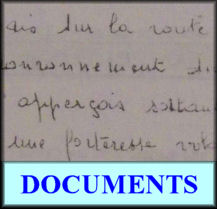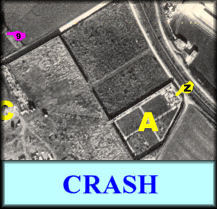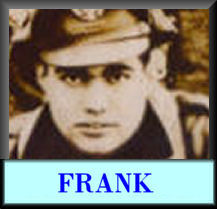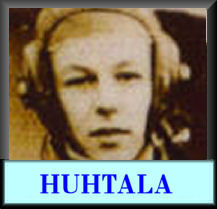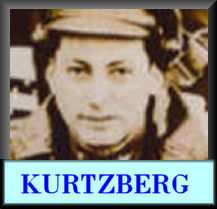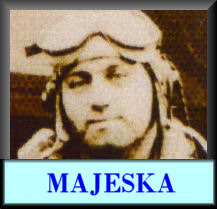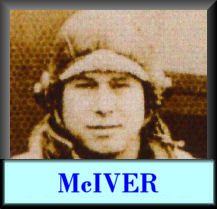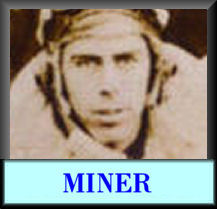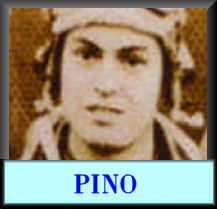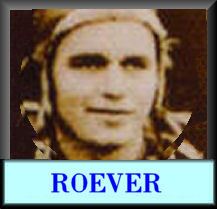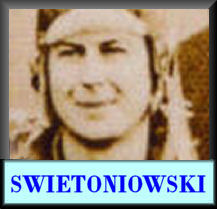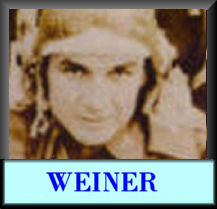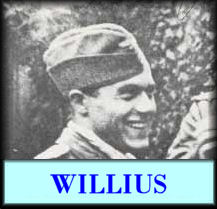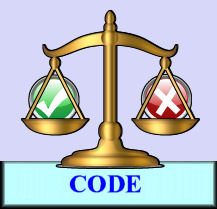Ce matin-la, je me trouvais dans la maison de mes parents, Rue du Presbytère, tout près de la scierie DEQUECKER. Suite au passage de plusieurs escadrilles d'avions volant au-dessus des nuages, un des bombardiers a dû être touché et se trouvait en difficulté. Tout a coup, j'ai entendu une forte explosion. De la fenêtre, j'ai aperçu un aviateur dans les branches d'un pommier de la propriété JOUY.
Je me suis dirigé vers la place et j'ai vu, dans la cour de la ferme VAN ASCHE, une partie de l'avion, que j'ai suppose être le poste de pilotage. Le pilote encore à ses commandes, à moitie calciné.
Ensuite, après avoir entendu dire qu'un autre homme était tombe sur un tas de sciure, je me suis précipité sur les lieux, derrière la scierie DEQUECKER. Celui-ci était a demi enfoui et des hommes l'ont sorti rapidement, ils l'ont allongé sur le sol, je lui ai essuyé le visage. L'aviateur a été transporté par la suite dans l'habitation de Madame DEQUECKER, a une centaine de mètres. Les Allemands sont arrives aussitôt.
En repartant, j'ai rencontre mon père et nous sommes allés chez mon Grand-père, Rue du Grand Montoir, où un autre Américain était tombe derrière le jardin, c6te Plaine de Coyolles.
Par la suite, le jour de l'enterrement, je me trouvais dans le cimetière sur la tombe de ma sœur et j'ai pu apercevoir l'Armée allemande rendre les honneurs aux morts.
Je n'ai jamais su si l'aviateur du tas de sciure était resté en vie. |
|
On that morning, I found myself in the house of my parents, Presbytere street, very close to the Dequecker factory. After the flyover of many squadrons of planes flying above the clouds, one of the bombers must have been hit and found itself in great distress. All of a sudden, I heard a huge explosion. From the window, I saw an airman in the branches of an apple tree in the Jouy estate.
I headed towards the square and I saw, in the Van Asche farm yard, one part of the airplane, which I suspected being the cockpit, with the pilot still at his controls, half-charred.
Then, after having heard people say that another man had fallen onto a sawdust pile, I rushed to the spot, behind the Dequecker factory. This one was half buried and men took him out quickly, they laid him on the ground, and I wiped his face. The airman was then carried into the house of Mrs. Dequecker, about a hundred yards away. The germans arrived at once.
On my way back, I met my father and we both went to visit my grand father, Grand Montoir street, where another american had fallen behind the garden, on the side of the Coyolle plain.
Afterwards, on the day of their burial, I found myself in the cemetary on the grave of my sister and I could see the german army paying tribute to the dead.
I have never known whether the sawdust pile airman remained alive. |
The airman in the branches was Jacob Kurtzberg.
The airman in the Van Assche Farm was OS McIVer. He was not "at the controls" of the aircraft, but in his ball-turret machine gun controls, which, with the presence of a perspex canopy, gave the impression that he was the pilot.
The airman on the side of the Coyolles plains was Edward Francis Majeska. |
|





